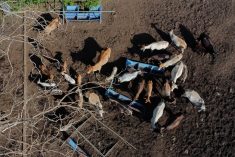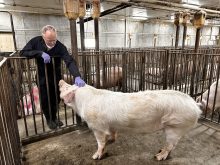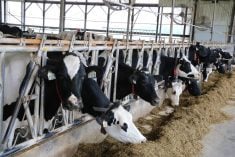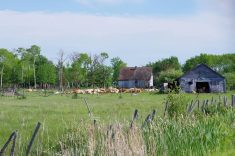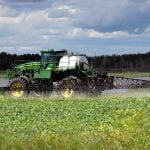KEYSER, Ont. — A pork producer from Middlesex County in Ontario figures the extra money he spent on his new nursery barn will save him dollars in the long run.
Paul Willemse said the ventilation system he’s using is unique to North American nursery barns. He also incorporated technology from a Dutch firm to help maintain the high-health status of his animals and optimize production.
“The air quality is crazy good,” Willemse said.
“This is the first nursery ever, in North America, with this system.”
Read Also
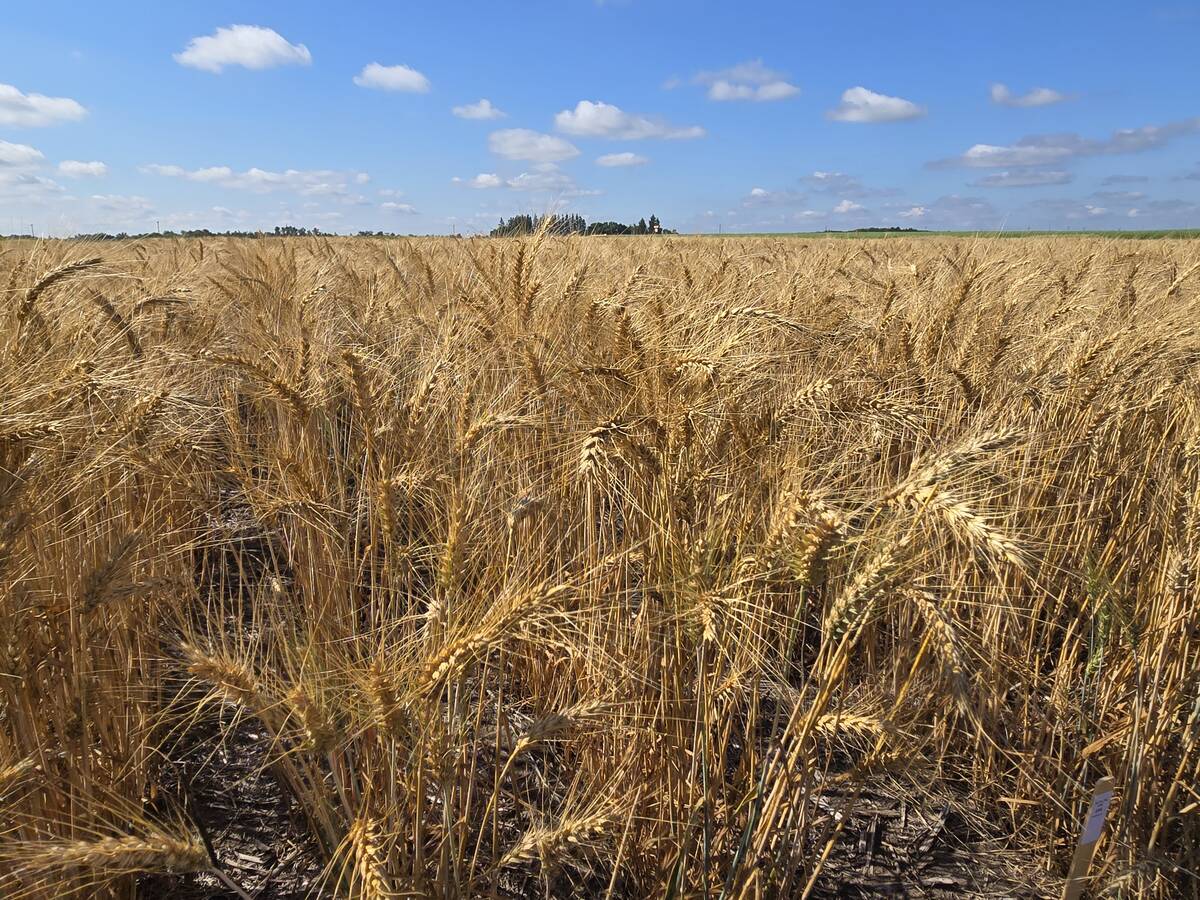
Fall rye hits record high in Manitoba
Winter cereals 2025: More Manitoba fields grew fall rye in 2025 than ever before, but winter wheat slipped and, while spring stand survival was good, drought took its toll
Willemse and Paul de Rond of MS Schippers conducted a tour of the nursery on April 21.
There are two key benefits to the ventilation system. Fresh air entering the barn is pushed through a heat-exchange system, taking advantage of air warmed by the body heat of animals as it exits the facility. That saves energy when it’s cold outside.
It also provides a healthier environment for both pigs and people.
Stale pit air is kept separate from the fresh incoming air. Fresh air is drawn into the barn from above and is drawn to the pigs’ breathing space at the same time that dust, bacteria, gases and viruses are pulled into the pit area.
Scott Lawrence with Wiltshire Hamroc in Indiana said the AirWorks ventilation system was developed in the 1980s and has gained popularity over the past three to five years.
“You can use 75 percent less propane compared to a tunnel-ventilated barn of the same size,” Lawrence said.
“In addition, the death loss is less, you use less antibiotics and you can sell more pounds of pork.”
While the nursery barn system is unique, Lawrence and the system’s inventor, Charlie Lemon, said the technology been installed in several Canadian weaner-to-finish barns. In Ontario, the ventilation systems are sold through Dortman Bros. Barn Equipment Inc., Lemon said.
Willemse has also invested in technology intended to maintain the high health status of his animals. The walls of the barn are built with rigid polymer forms and panels from Nuform Building Technologies Inc., another Ontario-based company.
For the exterior, load-bearing walls, the forms are slid into place and concrete is poured into them. Moving from the outside in, there’s a thin layer of plastic, two inches of insulation and then six inches of concrete contained in the plastic forms.
The polymer forms and interior wall panels provide surfaces that can be easily cleaned and disinfected. The same is true for the hallway floors in the barn, which have been coated with an epoxy paint supplied by MS Schippers and its Hy-Care system to create a pore-free environment.
In barns with concrete walls and floors, it’s impossible to scrub away all the harmful bacteria, no matter how thoroughly areas are cleaned and disinfected, he said.
Appropriate sanitizing, using Topfoam, is the second element of the Hy-Care system. It involves the application of an alkaline cleaner that breaks down biofilm on the walls and floors followed with a disinfectant.
“Because you’ve removed that film your disinfectant becomes more effective,” de Rond said.
The third element of the system relates to water, a crucial consideration with any livestock facility.
Using a multiple-line system, Schippers’ Total Water Care en-ables Willemse to clean lines with its Di-O-Clean product, lower the pH of the water to help maintain gut health in the animals and deliver up to two medications.
“The goal is to raise the pigs without antibiotics, but if they’re needed, they can be used on a room-by-room basis,” de Rond said.
The Schippers system also supplies products to control rodents and a biological product for the control of flies.
Willemse and his wife, Linda, and their employees operate a 500-sow, farrow-to-finish operation.



